You already know that you have to use keywords in your content in order to optimize it for search engines. But how do you optimize your site for why the user is searching, not just what they’re searching for? Search intent is the difference between being able to give the user an answer to whatever their specific question is and missing the mark by just throwing around vague keywords.
What is Search Intent?
Search intent, also called audience intent and user intent, refers to the purpose of a user’s online search. Is the user looking for an answer to a question, or do they want to find their way to a specific website? “What can I use Asana for?” is a lot different from “Asana website” being typed into Google. And “Asana premium plan” is different from both.
Search engines are able to interpret search intent and display appropriate results for users. And since people search for keywords based on a goal, it is incredibly important for content creators to understand their audience’s search intent and optimize their content for it.
The Role of Keyword Intent
How people phrase a search can give insight into their intent. By using those intent-based words in your content, you can raise your chances of being ranked in search results. For example, a transactional search may include the words “buy” or “discount,” while a search for a tutorial or general information “best way to” or “how to” keywords. You can find which of these queries lead to your site in Google Search Console, and you can then use those terms in your content. And focus your content to specifically solve the problem.
You probably have different pages on your website that revolve around the same topic. Using the power of keyword intent will help your pages show up for the correct search queries. For example, if you sell running sneakers, your product page can use the phrase “buy/purchase running sneakers,” while your informational blog post can use the phrase “how to choose the right running sneakers.”
By focusing on these specific intents, you prevent cannibalizing your own search results.
SEO Benefits of Optimizing for Search Intent
Search engines strive to deliver relevant results to users based not just on keywords, but also on intent. So the more you can optimize your pages for search intent, the higher you’ll rank in results, which means more traffic and conversions for you. Here are other reasons why search intent is good for SEO:
- People find what they’re after, so they’ll stay on the page longer, which reduces the bounce rate.
- The user will often visit your other pages after having their search intent met, which increases your page views and potential conversions.
- If Google features your answer in its featured snippet box, your page rank can score a top position. (You can boost your chances of that happening by using Schema markup within your posts, too. You can add and manage this with a plugin.)
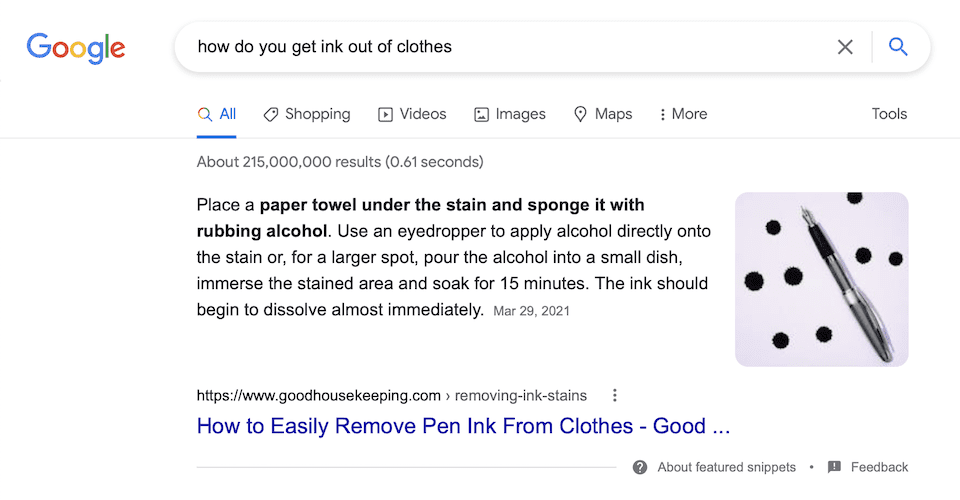
The Four Types of Search Intent
There are four types of search intent. Based on that alone, you can sometimes quadruple the amount of content that you have targeting the same short-tail keyword by focusing on the long-tail version based on the searcher’s intent. Let’s talk about each one.
1. Informational (or Educational)
This one is very common. The user wants to find the answer to a question or look for information about a topic. Often, these searches include terms like “how to,” “where is,” etc. An example is “how to set up my Apple Watch.” The user is looking for simple, educational content that provides specific information. Tutorials and walkthroughs rank highly here.
The user wants to find a specific page or website. For example, they may search for “LinkedIn” or “Amazon” instead of going directly to the website. This type of search intent often revolves around branded keywords. Sometimes, this intent is by accident, others on purpose. It can commonly happen when the URL doesn’t directly match the company name or has a less-common TLD (such as getrevue.co for Twitter’s newsletter service Revue, which falls under both.)
3. Transactional
The user is looking to complete an action, which means they’re about to convert. You can probably infer, in that case, that transactional intent is incredibly important to optimize for. The user’s intended action on may be a purchase, but it can also be signing up for a newsletter, filling out a contact form, visiting a store in person, or placing a call.
Usually, when someone is conducting a transactional search, they already know what they want to do. Your job isn’t to help them make that decision, but to complete it as quickly and as smoothly as possible. Examples of queries with this search intent might be “MacBook deals,” “Chipotle near me,” or “emergency clinic phone number.”
4. Commercial
Commercial intent does differ a bit from Transactional, if only slightly. Here, the user is most definitely looking to convert. Just not right away. They are seeking out a product or service specifically, but not for a tutorial or to purchase immediately. They likely want to convert soon, but not necessarily right now. They’re still in the exploratory phase. An example of a search like this might be “Apple TV free trial.”
Commercial intent is sometimes similar to informational intent because they are looking to learn about something before converting. But the user is not simply looking to read about it to learn. They are looking to get hands-on experience. For example, a commercial intent search might be “which online SEO course is best?”
This particular search won’t be the one that converts, but the next one may be. So the exploratory query is considered to have Commercial intent.
Search Intent and the Customer Journey
What people are looking for and the keywords they use also tend to reflect their stage in the customer journey. An informational search is a good way to attract a potential customer’s attention or hold their interest. A commercial search can stoke their desire for your product or service. A transactional search is a chance to convert the customer. Then, after a transactional purchase, you may want to retain that customer with more informational pages or a commercial page that rewards them for their loyalty.
How to Optimize Your Content for Search Intent
Your webpage should match the search intent of the user. If a person’s after information, showing them a product page won’t encourage them to buy. And likewise, if they’re ready to buy an item, bringing them to a long blog post isn’t going to help your business. In this section, we’ll give you tips and examples to help you create pages that complement each type of search intent.
Informational
Most online searches are informational. These queries may not lead directly to a transaction, but they could be a preliminary step to getting a new customer. This is your chance to show that your brand is an authority in its field and to tell people about what you can offer them. Informational intent queries often include words and phrases similar to these:
- Age
- History of
- How to
- Meaning of
- What is
- Where is
- Why do
To satisfy this type of intent, you should use the full question that’s searched for in the page’s most important content. That means putting it in the description, subheadings, and title. When answering the question, place the copy directly below the header with the question, like this:

This helps the user get what they need, and it helps Google and other search engines see that you have a direct answer to the question.
Create landing pages for your products and services. Or whatever it is you offer. Optimize your pages with brand and product names placed in the headers, metadata, and title tags. This way, the user will be able to find the website or webpage they’re looking for by using your brand name or the name of something you offer.
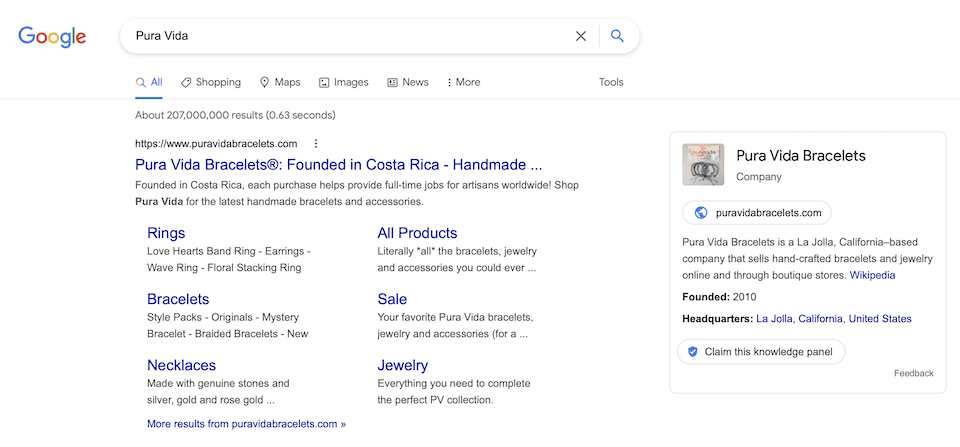
Transactional
This type of search is a money-maker, so you have to make it as easy as possible for the user to get from the search engine to your checkout page. The landing page they click to from the search results should have everything they need without being redirected somewhere else. The more friction between them and paying you, the less likely they are to finish the process.
Here’s an example for the Muzzle software that blocks notifications when screensharing. The search is keyword is “Muzzle app,” as you can see here:
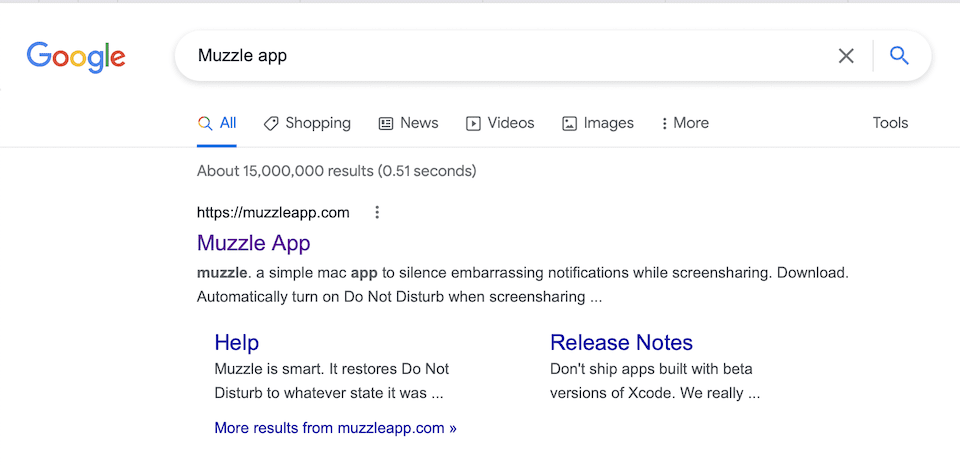
The landing page clearly shows the user how to carry out the transaction immediately with a Download button:
If your service or product isn’t quite as direct as that, here are some things you can do that also provide a direct flow from search to transaction, while explaining what will happen along the way:
Call to Action (CTA): The CTA should be eye-catching and clear. It should stand out to the visitor and be the first thing they see. It should also be obvious what following through on that CTA will do.
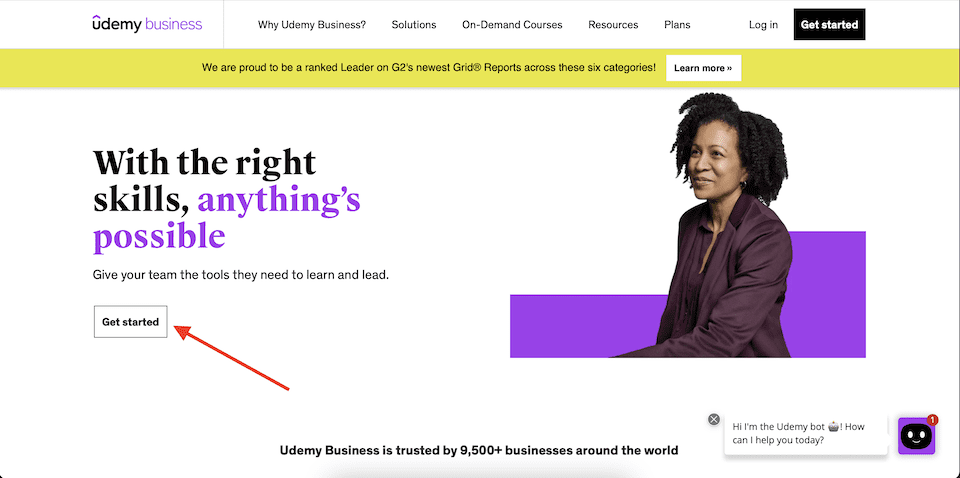
Design: It takes a fraction of a second for a visitor to have an opinion about a webpage, and most of that opinion will be based on the design, not the text. Use a minimal amount of words, and instead express the point of the page using visuals.
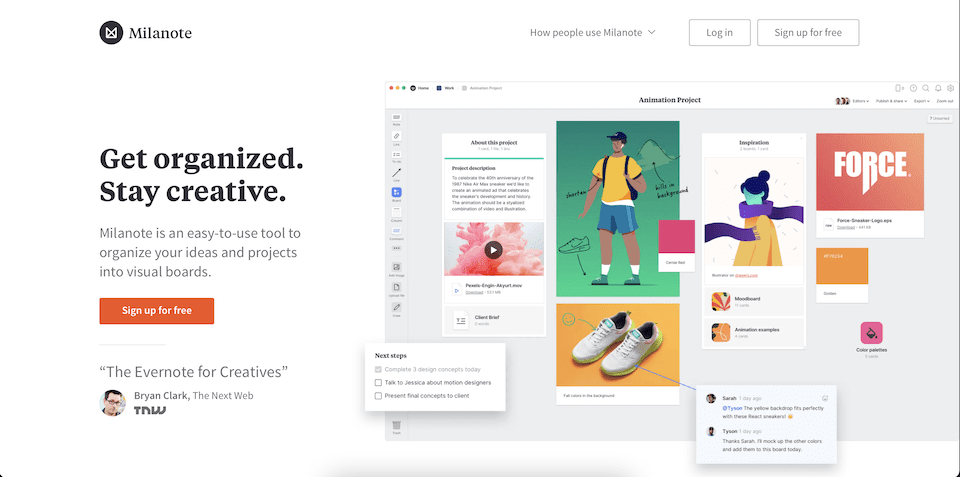
Text: With the text that you do include on the page, your goals are to instill trust in the user, appeal to their emotions, and/or simplify the decision-making for them.
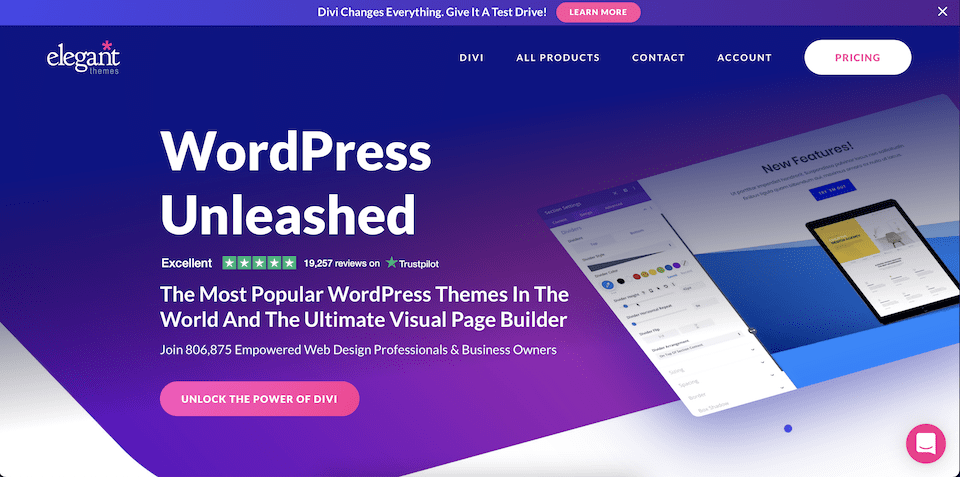
Lastly, the conversion process should be brief. Don’t make the visitor take too many steps to carry out the transaction. Forms should be short, only capturing the information you absolutely need. And the steps should be consolidated as much as possible — for example, creating an account should also have an option for signing up for your newsletter instead of making these two separate steps.
Check out these landing page plugins or our list of the best page builder plugins that make it easy to build high-converting landing pages using a visual page builder.
Commercial
In addition to your regular product/service pages, you should have pages that specifically talk about the freebies you offer. And if you don’t have anything that you give away for free that meets a search, you can create a resources page that will still help the visitor find what they’re looking for. That gives you a chance to increase brand awareness, offer high-quality customer service, and possibly generate new leads.
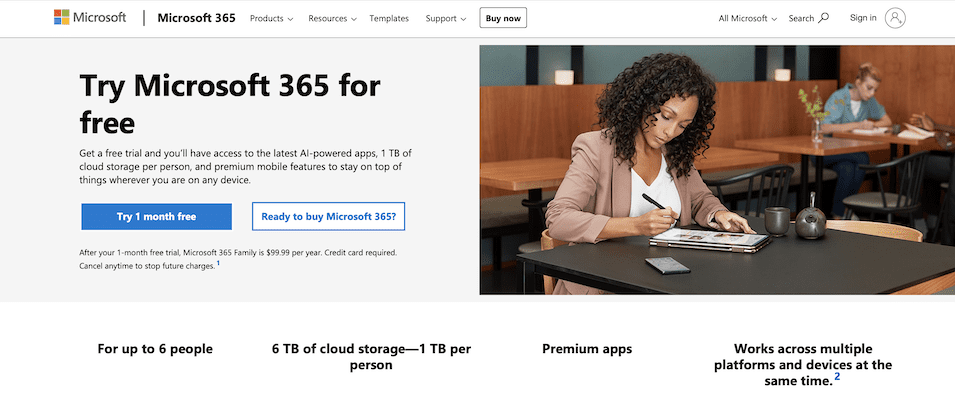
How to Use the Search Results Page to Craft Your Webpages
Google is pretty smart when it comes to search intent. It knows what type of information the user is looking for. For example, if you search for “peanut butter brownies,” Google knows you’re probably after recipes, not a baking class, a box of brownie mix from Amazon, or the history of the peanut butter brownie. It also knows when users will prefer images and/or videos with their results, like for a how-to walkthrough with step-by-step instructions.
The search engine results page (SERP) is a great resource for discovering what people are looking for when they enter certain search terms – and what they’re getting back. You can then determine if they’re getting the right answers or if Google is ranking the wrong type of results. You can then build your pages accordingly, whether you’re competing with others who are doing it right or you’re going to fill in a gap.
Step-by-Step Guide to Using the SERP for Search Intent Research
This process is a breeze, and it’s going to give you a ton of useful insight:
- Using a private browser window, search for a keyword in your chosen search engine.
- Look closely at the results. What is the most common type of content that’s being returned? Is it commercial, informational, etc.? Is one type of search intent dominant? Are there images or videos? Is there a FAQs that shows up? Also look at the related searches — maybe there’s a better keyword format in there for your content.
- Assess your own content to see how aligned it is with the info you found from the SERP.
- If the SERP intent doesn’t match your content, you may need to change your strategy. That could mean changing the keywords or the content itself.
Examples of How to Use the SERP to Guide Your Content
Let’s circle back to the “peanut butter brownies” recipe. The top results are recipes:
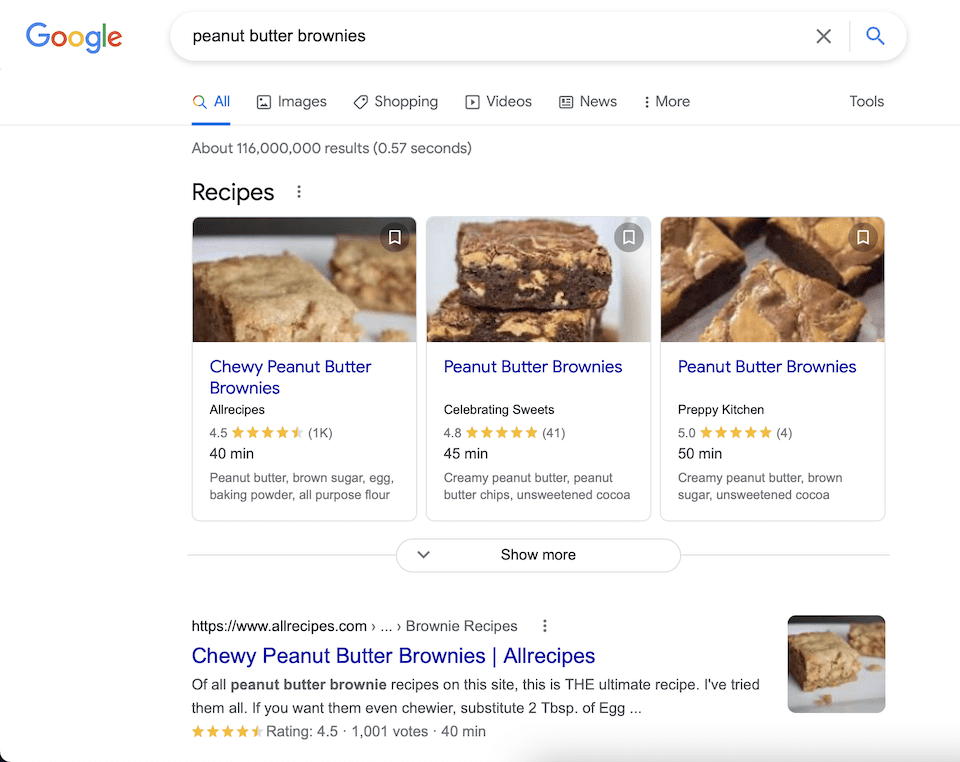
But in the People Also Ask box, two of the questions are about adding peanut butter to the brownie mix:
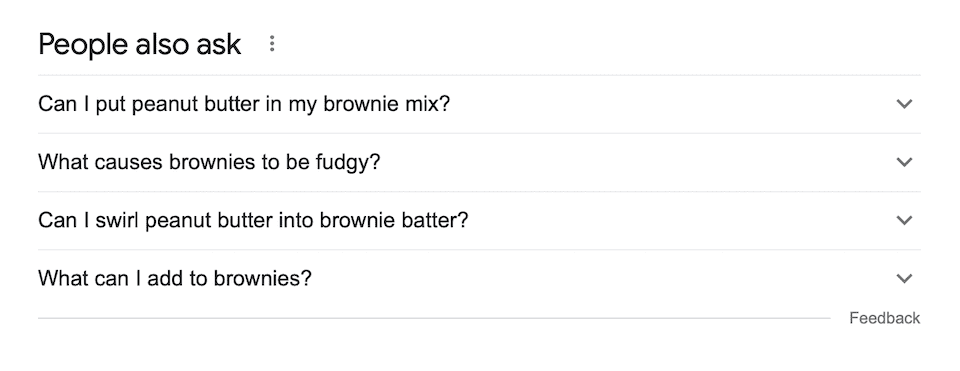
There seems to be a gap in information in the top results, and you could write an article to address that specific question. Here are two more examples of how the SERP can help you figure out what to do with your own content:
- If you’re trying to rank a product page for a key phrase, but the SERP is showing informational content instead, you may want to change your keyword strategy.
- When searching for a keyword you’re trying to rank for, you notice that the top-ranked results have images, but your content doesn’t have any. Add some! It may sound simple, but it works so often, we had to include it here.
P.S. In order to get objective results for a search term that aren’t influenced by your browsing history, use a private browser window. This can give you far more accurate results about what other people see instead of keeping you in the repeating loop of “recommended content.”
Final Thoughts About Search Intent
When deciding which pages to rank, search engines consider both the search term that’s being used and the search intent of the query. By knowing what users are searching for and why they’re searching, you can create content to fit what they’re after. That will draw in potential customers and qualified traffic while improving engagement metrics. You should also check out our article about creating customer personas, which will make it even easier to appeal to your audience and why they’re looking for your site.
What is your strategy to target your users’ search intent? Let’s talk in the comments and share tips!
Article featured image by Fonstra / shutterstock.com


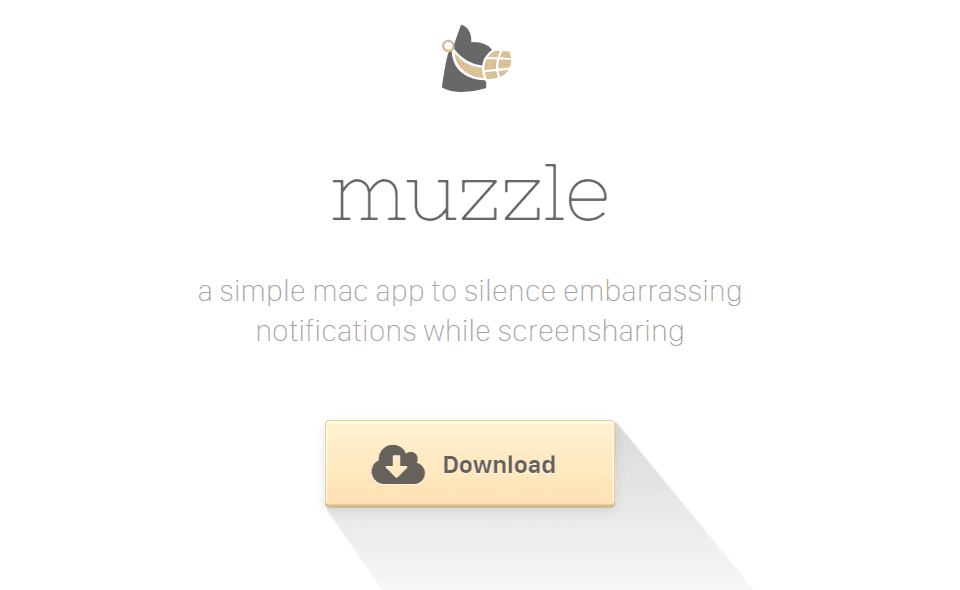






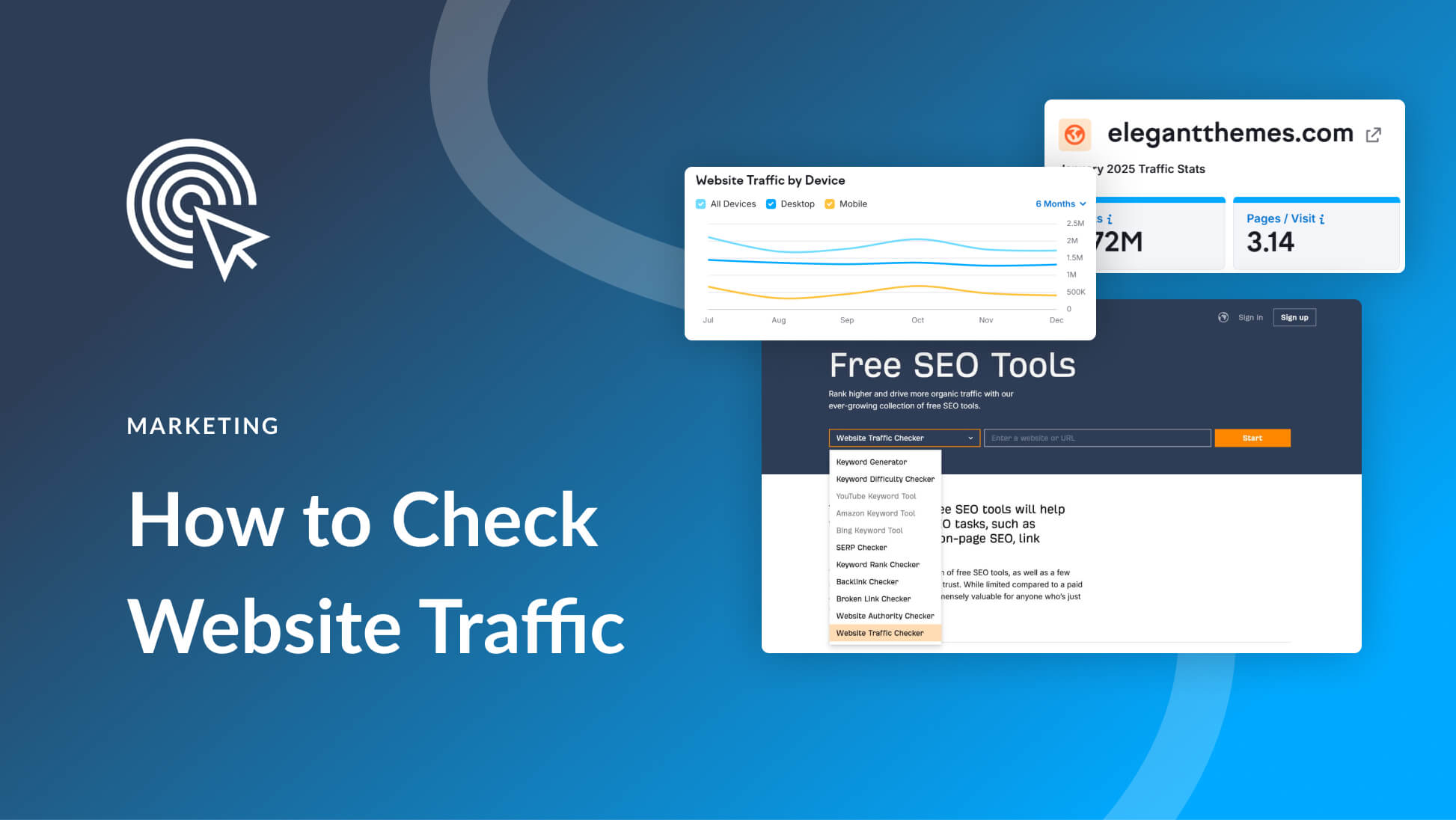
Leave A Reply